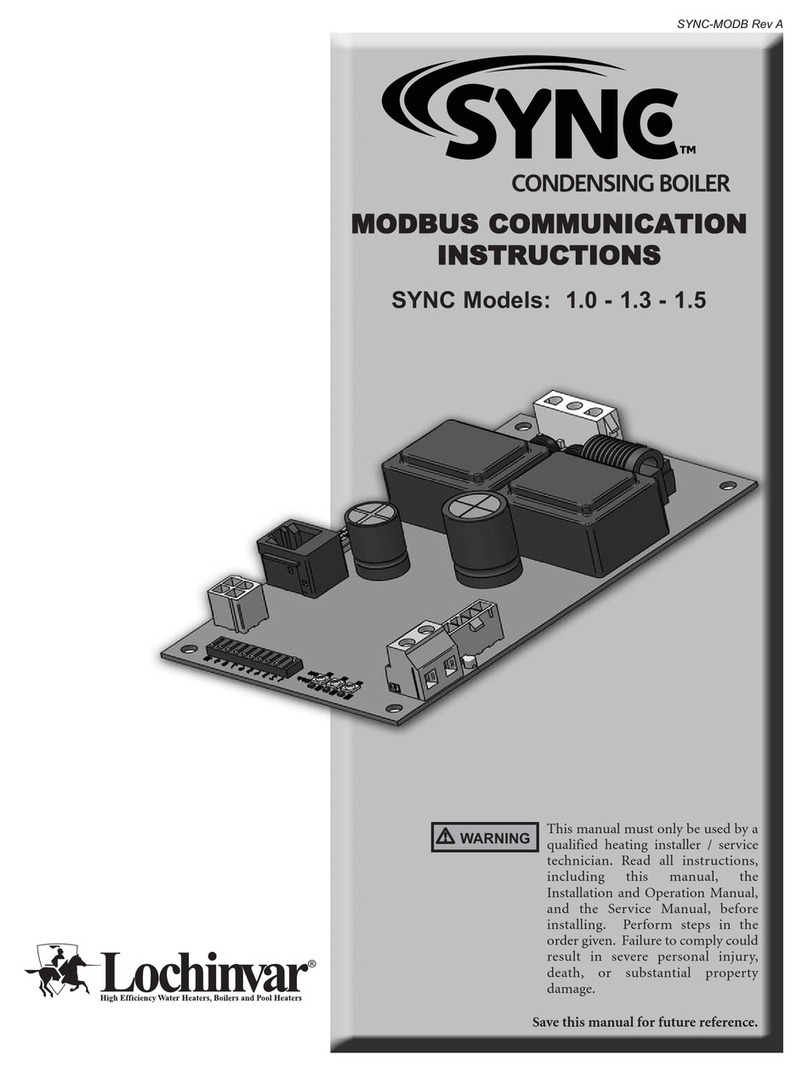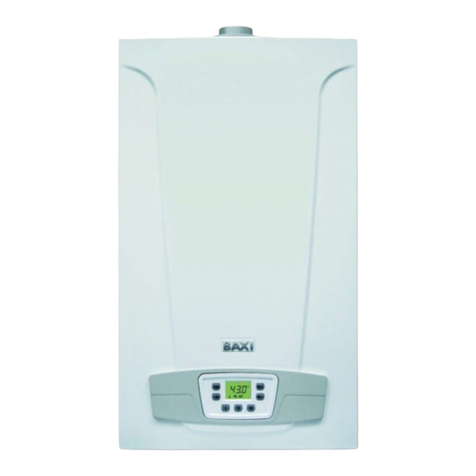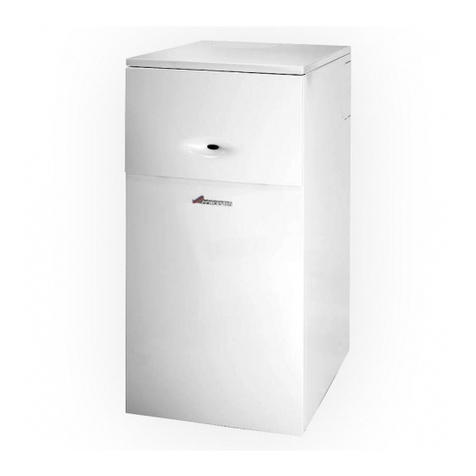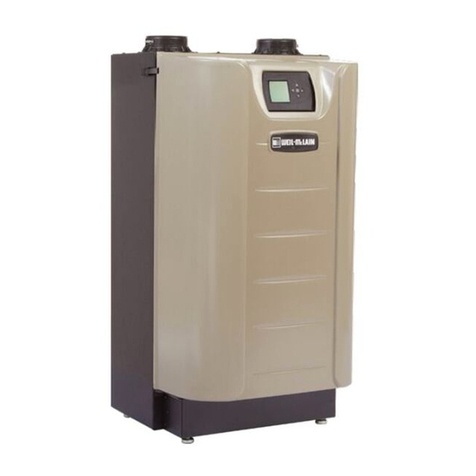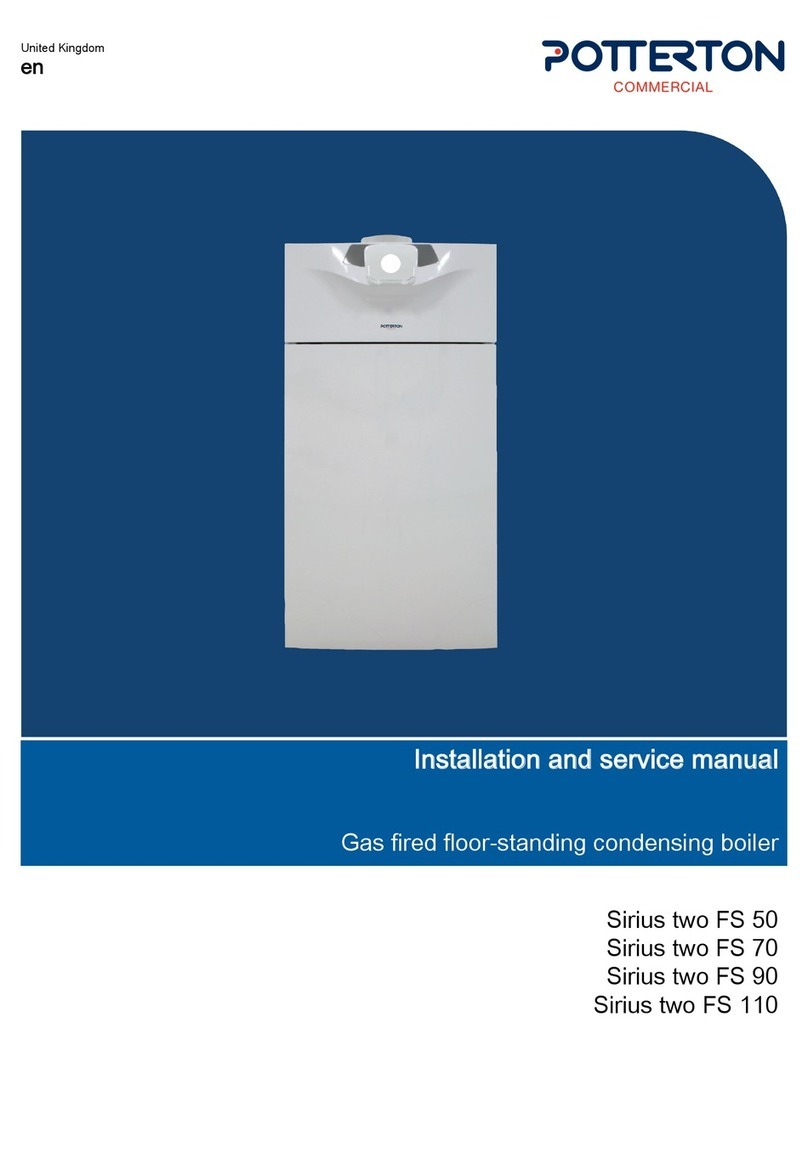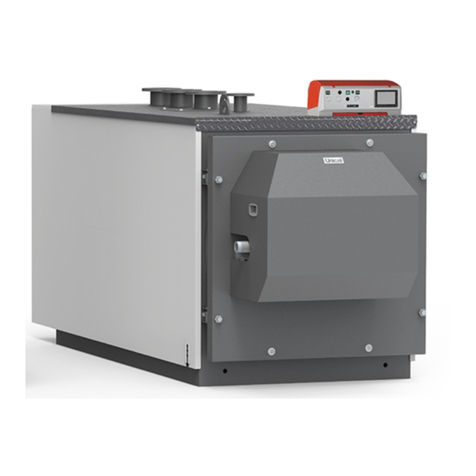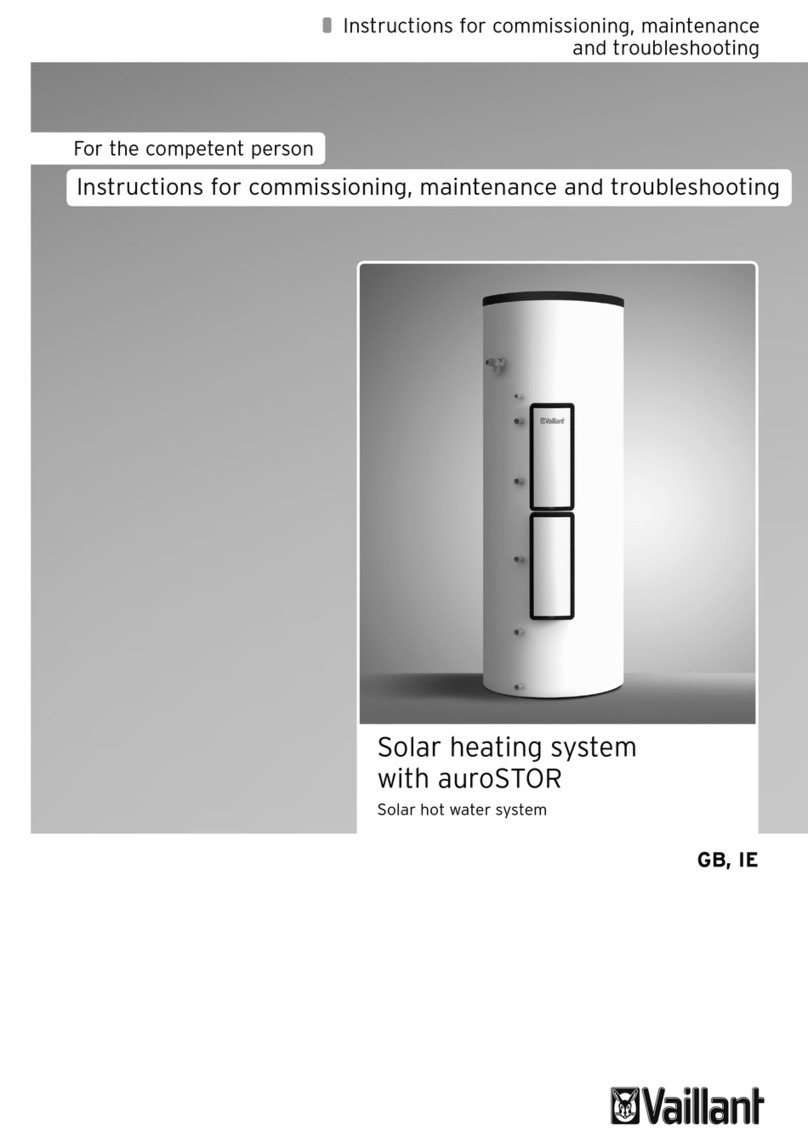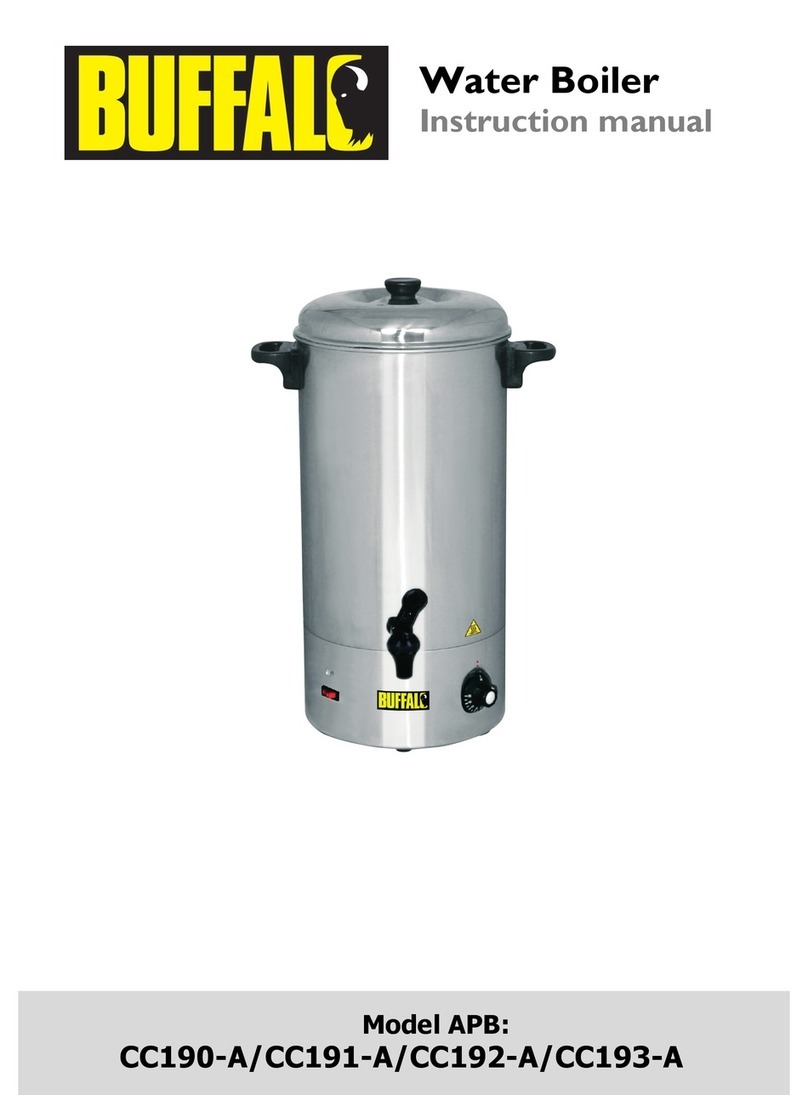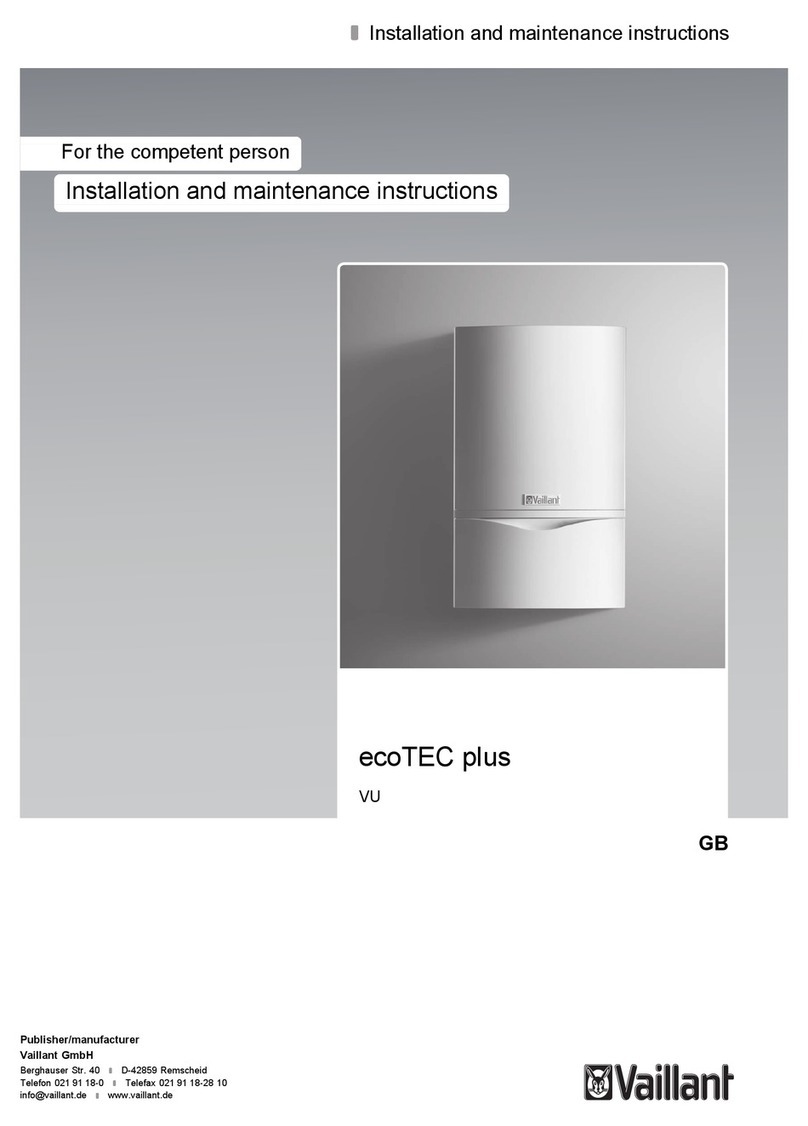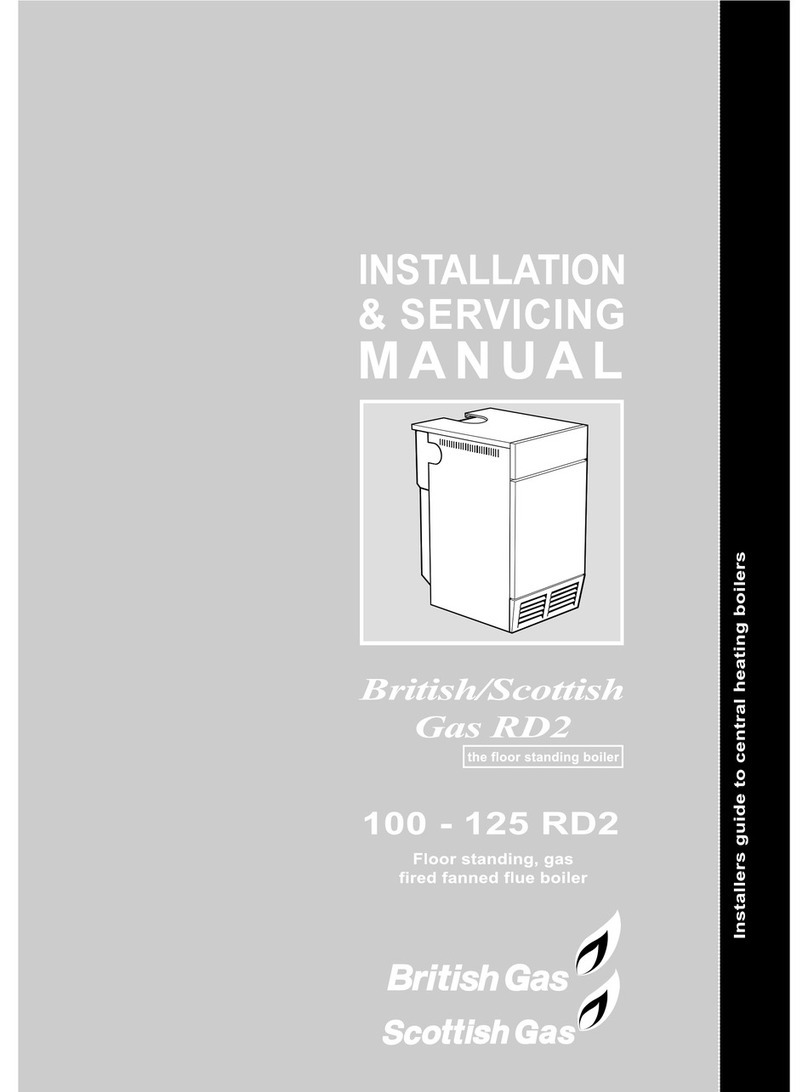
EN • 10
661Y0500.E
ENGLISHFRANCAISNEDERLANDSESpAñoLITALIANo
РУССКИЙ
DEuTSCH
WHAT TO CHECK START-UP?
• Safety valves (domestic hot water) and (central heating)
correctly installed and discharge connected to the drains.
• Domestic hot water tank and primary circuit filled with
wa t er.
• Air bleed correctly carried out on both circuits.
• Air valve sealed.
• Both hot and cold water pipes correctly connected to the
tank’s hot water circuit.
• Heating feed and return correctly connected to the tank.
• The electrical cabling is correct.
• The tank’s thermostat is set according to the instructions
shown in § “Setting the thermostat”.
• Connections checked and free of leaks.
SETTING THE THERMOSTAT
Factorysettings
The thermostat of the tank is factory preset to the minimum
recommended by the standards, over a range of settings from
60 to 90°C.
To increase the temperature: turn the button clockwise.
To reduce the temperature: turn the button anticlockwise.
When adjusting the tank’s thermostat, make sure that the
boiler temperature is set to a value at last 10°C higher than
tank’s thermostat.
Recommendations
There is a risk that bacteria including “Legionella
pneumophila” may develop if a minimum temperature
of60°Cisnotmaintainedbothinstorageandinthe
hotwaterdistributionnetwork.
Thereisariskofscaldingfromhotwater!
ACVrecommendstheuseofathermostaticmixing
valvesettoprovidewaterat60°Corless.
• The water heated to wash clothes, dishes and for other
purposes can burn and cause serious injury.
• Children, the elderly, the sick or the disabled are the most at
risk from burns due to very hot water. Never leave them on
their own in a bath or under the shower. Never allow young
children to turn on hot water taps or fill their own baths.
• Set the water temperature appropriately according to the
intended use and plumbing codes.
Whenrepeatedlydrawingsmallamountsofhotwater,
a“stratification”effectmaydevelopinthetank.
Theupperlayerofhotwatermaythenreachveryhigh
temperatures. A thermostatic mixing valve will stop
water at excessivly high temperatures reaching the
outlets.
CommISSIoNING
Centralheatingtank
1. Close the drain cock [4] on the tank’s primary circuit.
2. Open the isolation valves [5] on the central heating circuit
connected to the boiler.
3. Bleed the air in the circuit by opening the air vent located on
the upper part of the tank.
4. Follow the instructions supplied with the boiler for filling.
5. When the tank is full and the air has been removed, the
bleed valve should be closed.
Ensurethatthebleedvalveisproperlysealed.
6. If any antifreeze is needed in the primary circuit it mus be
compatible with Public hygiene rules and not be toxic.
A food-type Propylene Glycol is recommended.
Consult the manufacturer to ensure that the antifreeze is
compatible with the tank’s construction materials.
Neverusecarantifreezeorundilutedantifreeze.
Thiscancauseseriousinjury,deathordamagetothe
premises.
Beforepressurisingthecentralheatingtank(primary)
you should first pressurise the domestic hot water
tank(secondary).
Both the domestic hot water tank and the central
heatingtankmustbefilledbeforeusingthetank.
FILLING THE TANK
Domestichotwatertank
1. Close the drain cock [6] of the DHW circuit.
2. Open the isolating valve [1] of the DHW circuit for the filling.
3. Bleed the air in the circuit by turning on a nearby hot water
tap [10] Fill the tank until the flow rate stabilises.
4. Turn off the hot water tap [10].













